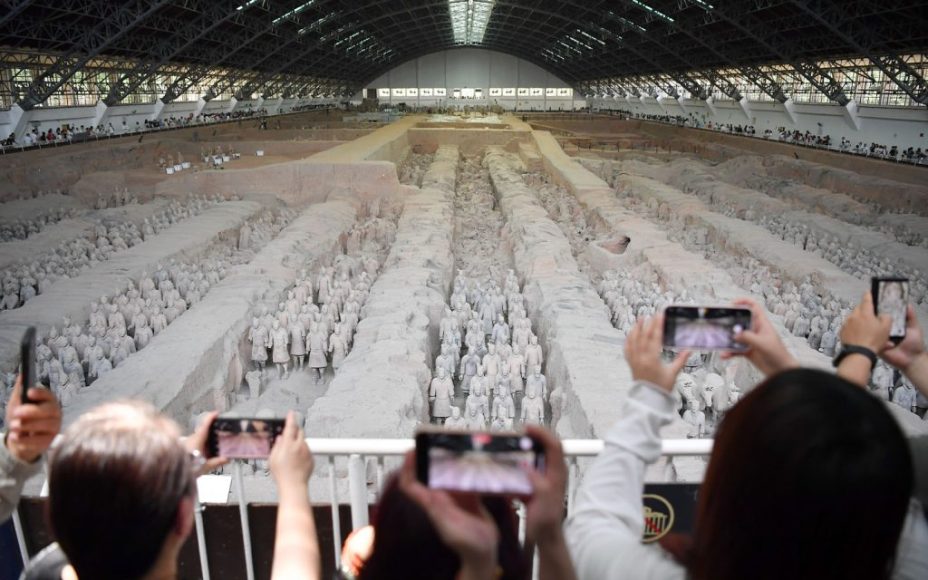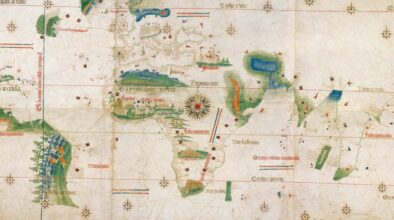Many places are defined by a single, monumental architectural feat in their history. Cairo, in Egypt, has its mysterious pyramids. The Cambodian city of Siem Reap is home to the Angkor Wat temple complex. Jordan has the rose-hued ruins of Petra. These are places where long-gone civilisations’ achievements still echo loudly, through the archaeological evidence left behind. And their modern economies lean heavily on the allure of history, on attracting visitors eager to experience remnants of the past.
This is not the case in Xi’an, Shaanxi Province, even though it has the credentials. The area’s 2,200-year-old Terracotta Warriors are, undeniably, one of the world’s most significant archaeological discoveries. An immortal army made of clay, poised for battle, buried in the vast necropolis of Qin Shi Huang, the first emperor of a unified China (221–210 BCE). By the time these life-sized soldiers, horses and chariots were unearthed in 1974 by farmers digging a well, they had spent millenia underground.
There are over 8,000 Terracotta Warriors and nearly 700 horses standing in excavation pits outside of Xi’an. While the scale of the emperor’s entombed army is awe-inspiring, it’s the intricate details of each sculpted figure that move viewers the most. From afar, they seem like an army of clones. But up close, no two faces are the same. Each figure has unique facial expressions, clothing and even hand gestures, reminding us that history was populated by individuals as complex as those around us today.
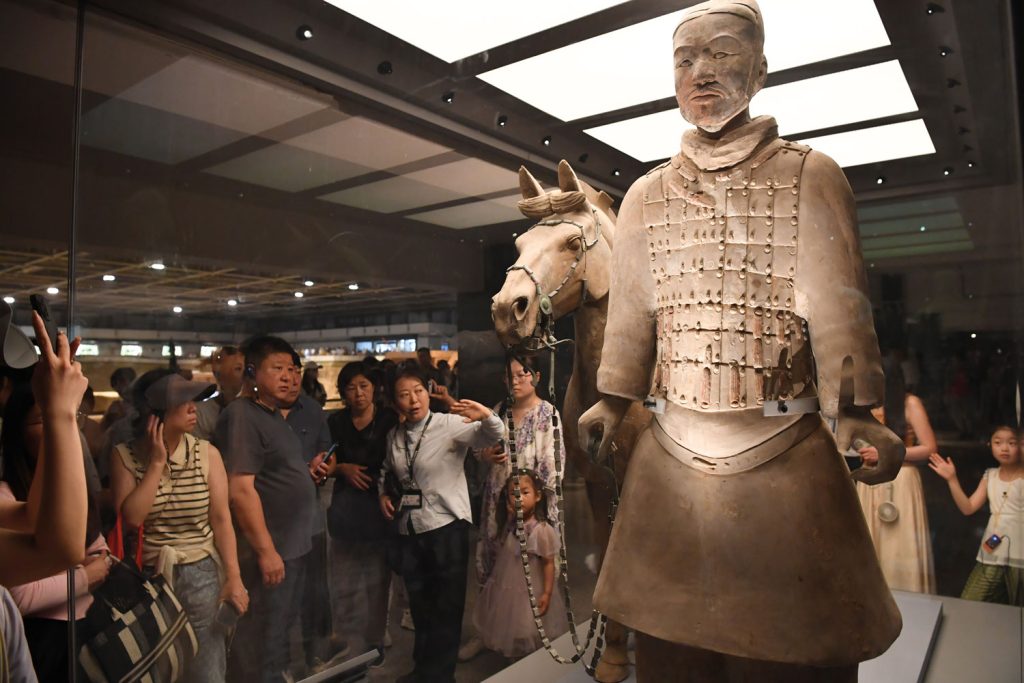
However, Xi’an refuses to be defined solely by its past. The city has evolved into a thoroughly modern metropolis drawing not just tourists, but investors, entrepreneurs and students from across the globe. It is a world-leading science and technology hub, a financial centre, and a crucial cog in the Belt and Road Initiative (BRI).
Today, many visitors reach the historic capital aboard the ultra-high-speed train from Beijing. In August, our delegation of English and Portuguese-speaking journalists from Macao travelled to Xi’an on one such train – hurtling along at 300 kilometres per hour – as part of a government-backed media tour. After several days spent exploring the area, we left with a deeper appreciation for Xi’an’s unique blend of history and innovation.
Our visit was well-timed, as ties between Macao and Xi’an are poised to strengthen. Direct flights between the two cities resumed in August, following the addition of Xi’an to the Facilitated Individual Travel scheme in March. These developments are expected to boost economic, cultural and tourism exchanges between the Special Administrative Region and the mainland city of 13 million people.
The new silk road

Trains were a recurring theme for the media tour. Our delegation’s first destination was the China-Europe Railway Express Assembly Center, a place where old and new converge in a way that is strikingly symbolic. Xi’an, once the starting point of the ancient Silk Road, is now home to a modern logistics hub that connects China to Europe, reaffirming the city’s ongoing role as a vital artery of trade and cultural exchange.
The Assembly Center is a crucial hub for China’s ambitious BRI – a global infrastructure development project aimed at building trade networks reminiscent of the original Silk Road. The centre has grown dramatically since opening in 2013. That inaugural year, just 46 trains rolled out of Xi’an’s International Port Station, while 2023 saw that number swell to over 5,300. This year, authorities estimate the equivalent of about 980,000 20-foot containers will pass through the station.
Railway tracks lead directly from Xi’an to international destinations including Kazakhstan, Uzbekistan, Azerbaijan, Germany, Poland and dozens of other countries. While the caravans that departed Xi’an for Europe more than 2,000 years ago were famous for transporting silk, today’s modern trains are loaded with commodities ranging from laptops to footwear to cars.
Bringing history to life
Our next stop was the Mausoleum of the First Qin Emperor, where the Terracotta Warriors are located. Like the pyramids, Petra and Angkor Wat, the mausoleum is designated a UNESCO World Heritage Site, and its clay inhabitants are famous world-wide. Visting them in person is a bucket-list item for many.
While a small number of the soldiers and their horses do travel the world, gracing museums in countries as far-flung as New Zealand and the United Kingdom, the desire to experience the terracotta army in situ is a powerful thing. The massive hangar-like structure protecting the excavation pits, where most of the warriors remain, is a major tourism draw for Xi’an. Since 1979, more than 150 million people have visited the pits.
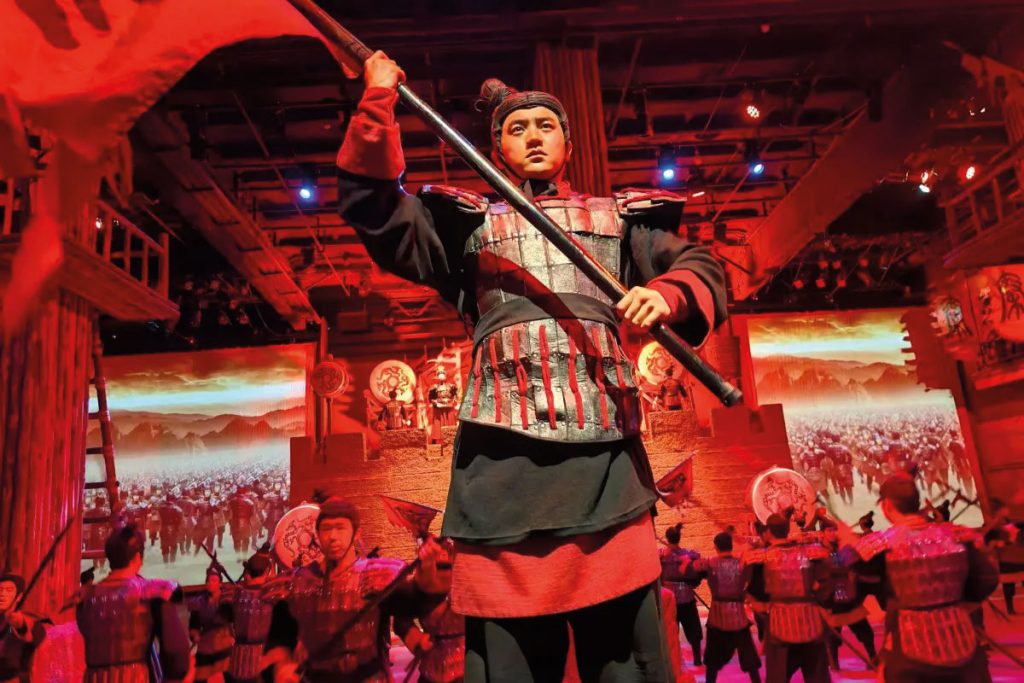
While the actual Terracotta Warriors stand in silent formation, their story comes alive in a stunning live-action performance, The Resurrected Legion. This powerful show, following the lives of two brothers and their roles in the Qin dynasty’s uprising, combines traditional Chinese performance art with holographic projections in a purpose-built theatre very near the Mausoleum of the First Qin Emperor. Audiences move through different rooms during the performance, each space representing a chapter in the brothers’ journey from their family’s village to the remote battlefield.
The experience is highly emotive. The 28 actors and 300 extras – each a trained martial artists – display impressive discipline, agility and commitment to their roles. While the characters they represent are fictional, they – like their terracotta counterparts – help humanise the legendary battles that shaped ancient China.
Where the past becomes a playful present
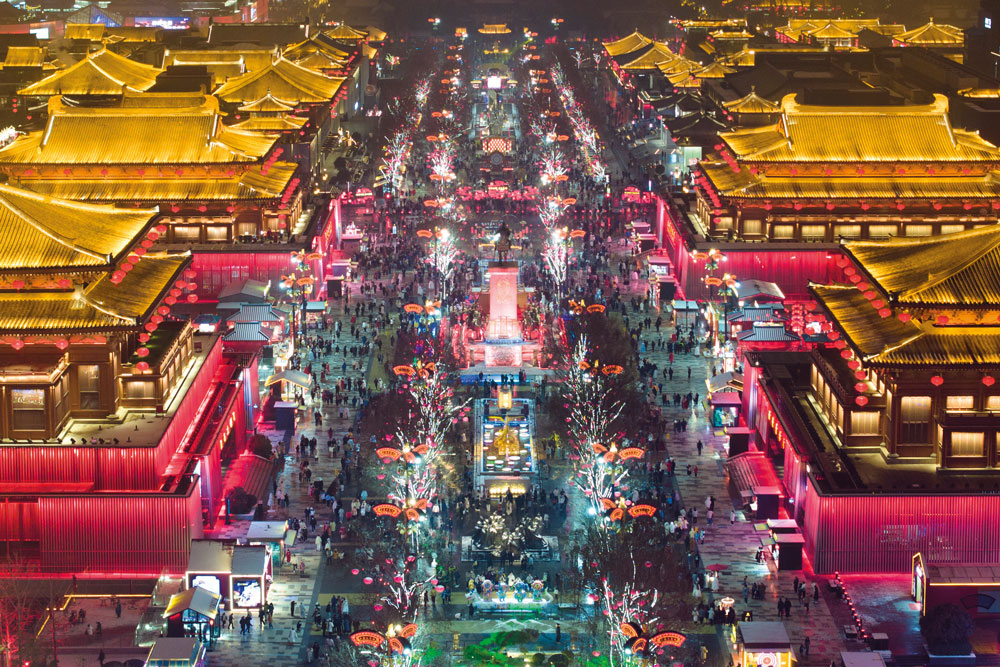
The Qin is not the only dynasty visitors can’t help but encounter in Xi’an. Remnants of the opulent Tang dynasty (618–907 CE) are also on display – especially at the heritage theme park Tang Paradise and at Datang Everbright City. Our media delegation visited both, gaining visual insights into why this period was considered a golden age of Chinese civilisation. Xi’an, of course, was the Tang dynasty’s capital.
Located to the city’s south, near the Big Wild Goose Pagoda, Tang Paradise takes the form of a vast imperial lotus garden with a central lake. It’s dotted with modern reconstructions of Tang-era architecture, all beautifully illuminated at night. Lakeside sculptures are also part of the light show, and strolling around the garden after dark feels like stumbling into a fairy tale.
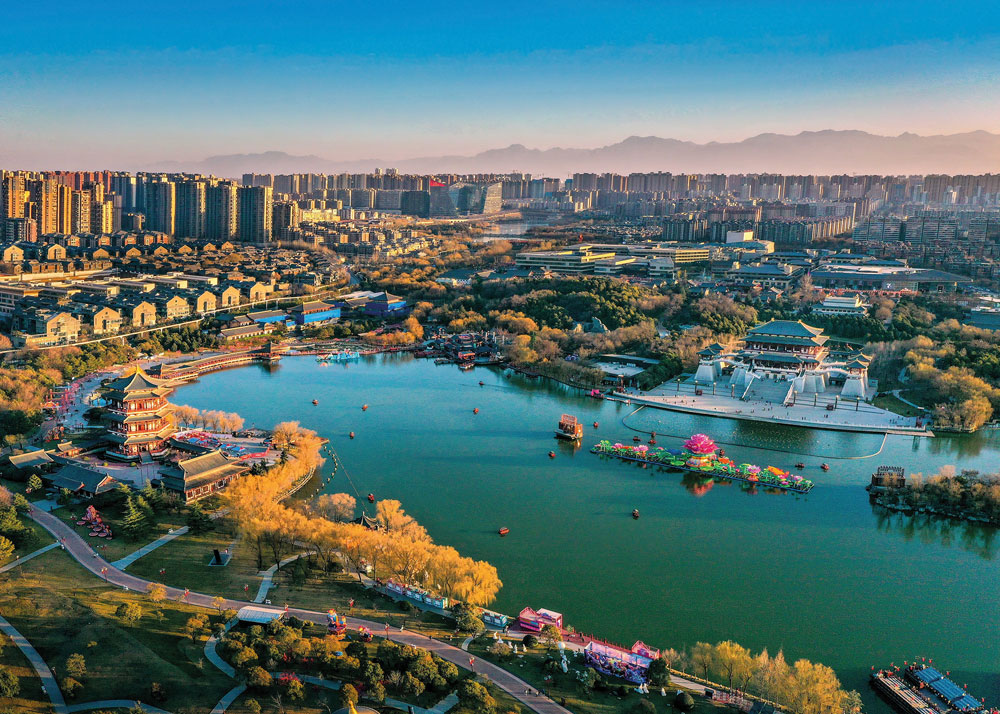
Nearby, Datang Everbright City offers a more urban representation of Tang life. This 2,100-metre-long pedestrian street is lined with art installations, period-style buildings and vibrant light shows, immersing visitors in the grandeur of the era with a modern twist. The area comes alive at night, drawing thousands of shoppers, foodies and amateur photographers. Many visitors don elaborate period costumes, complete with ornate headdresses, and peruse snack stalls while looking regal. Often their shoes are the only giveaway that they have not stepped out of a historical painting.
Preserving the written word
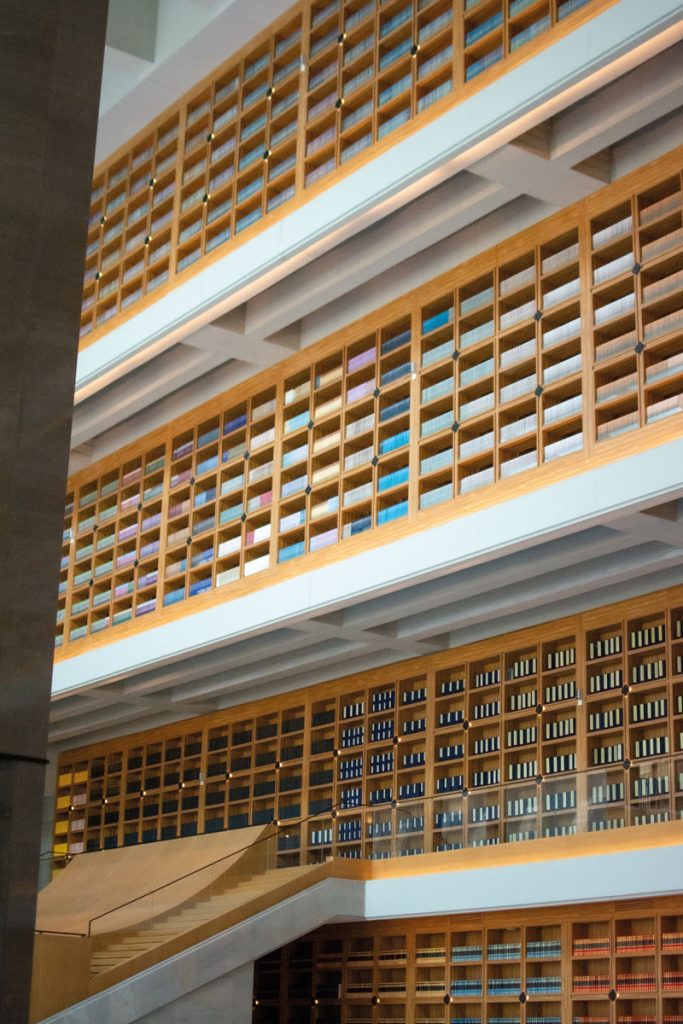
The media delegation’s final stop was the Xi’an branch of the National Archives of Publications and Culture, a spectacular feat of modern architecture set against the backdrop of the Qinling mountains. The facility, which opened in 2022, is home to around 2.09 million copies of historical texts and 160 terabytes of digital resources.
Xi’an’s archive is one of four in China, alongside similar facilities in Beijing; Hangzhou in Zhejiang Province; and Guangdong Province’s Guangzhou. Often described as “seed banks for Chinese culture,” these archives were designed to safeguard and showcase the country’s written heritage. Each archive has a different focus; Xi’an’s highlights works from the Tang dynasty and the country’s northwestern culture.
The serene, carefully manicured grounds of the archive invite contemplation on Xi’an’s rich history and thriving present. Once the heart of imperial China and the starting point of the Silk Road, the city has managed to remain a successful hub of commerce and culture to this day. That’s impressive proof of its ability to evolve through the ages; to never rest on its laurels. The Terracotta Warriors may draw millions of visitors each year, but they are just one facet of a city that continues to grow and innovate, blending its deep historical roots with the nation’s modern development.
